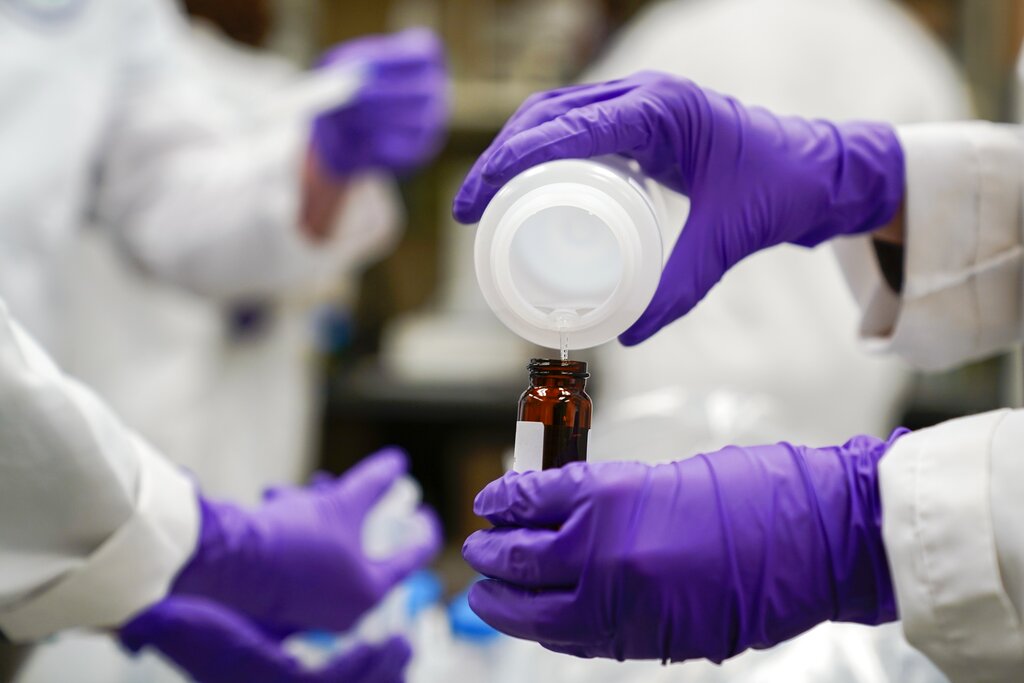The city of Wausau will study ways of removing PFAS from its drinking water after tests revealed elevated levels of the harmful “forever chemicals” in all six city wells.
The city’s water utility conducted the testing for perfluoroalkyl and polyfluoroalkyl substances, commonly called PFAS, after the state Department of Natural Resources recommended the testing in December based on a 2019 test result that also showed elevated PFAS levels.
According to the January tests, levels of the chemical compounds in Wausau exceed the proposed state standard of 20 parts per trillion for the chemicals, but fall under the federal Environmental Protection Agency’s advisory level, which is 70 parts per trillion. State agencies recommend residents take steps to reduce their exposure to the water by using specialized filters for drinking water, switching to purified or filtered bottled water and limiting use of city water in foods that absorb a lot of water such as rice or oatmeal.
News with a little more humanity
WPR’s “Wisconsin Today” newsletter keeps you connected to the state you love without feeling overwhelmed. No paywall. No agenda. No corporate filter.
At a press conference Wednesday, Wausau leaders said they were not advising people to stop drinking city water, but would make available information on potential mitigation measures residents can take voluntarily.
The city will work to build PFAS-reducing capabilities into its water treatment plant, a process Mayor Katie Rosenberg said would take about seven months. In the meantime, the city will consider short-term solutions including bringing in a mobile treatment facility and setting up bottled water refilling stations around the central Wisconsin city of about 40,000 people.
There are thousands of different PFAS chemicals, found in household items including stain protectors and nonstick cookware, and in larger quantities in firefighting foam.
Wausau is just the latest Wisconsin community to detect PFAS in its water. In some places, residents have had to give up drinking from contaminated wells. The DNR is investigating PFAS contamination at more than 90 sites statewide, including in Madison, Milwaukee, Eau Claire, La Crosse and Rhinelander.
And that list is likely to grow. On Tuesday evening, Gov. Tony Evers announced $600,000 in funding from the EPA for municipalities to test their water sources.
The health effects of PFAS are cumulative rather than acute, said Dr. Sarah Yang, a groundwater toxicologist with the state Department of Health Services. That means they tend to stay in the body and build up over time. Health effects can cause increased cholesterol levels, reduced fertility in women and can decrease the effectiveness of some vaccines. PFAS exposure is also linked to an increased risk of some cancers, including prostate and testicular cancer. But all of those health effects can also come from other causes, and science on the specific risks of PFAS exposure is still emerging.
Even as awareness of the health risks of PFAS-contaminated water have grown, there remain no state regulations in place on the chemicals. Just last month, a judge ruled the DNR has the legal authority to test for the chemicals but not to enforce any action after the state’s largest business lobby, Wisconsin Manufacturers and Commerce, sued over enforcement efforts.
The findings in Wausau are not among the most serious cases of contamination in the state, when compared to places such as the town of Peshtigo or French Island, where well water was found to greatly exceed federal standards for PFAS. But they are among the broadest. The city of Eau Claire had to shut down nearly half its city wells. All of Wausau’s municipal water supply was found to be above proposed state recommendations for PFAS levels, ranging from 23 parts per trillion to 48 parts per trillion.
“Wausau’s situation is a little bit more complicated than some of these other municipalities since every well that we have has tested positive for elevated PFAS levels,” Rosenberg said. “Shutting down the wells right now isn’t realistic.”
That means individuals are left to take their own mitigation measures as the city launches pilot programs in coming weeks to study ways of removing PFAS from its water.
For environmental groups, the finding shows the need for state standards and mandatory testing by municipalities.
“Wisconsinites deserve full transparency about what is in their water,” Tony Wilkin Gibart, direct of Midwest Environmental Advocates, said in a statement. “While the announcement of available funding for PFAS testing is a positive development, it should not be voluntary. All Wisconsin water utilities should be required to test for PFAS in drinking water now.”
The state’s Natural Resources Board is set to vote on standards this month.
Yang said it’s not necessary for Wausau residents to stop showering or washing clothes in city water. Even cooking foods that don’t greatly absorb water, such as pasta or steamed vegetables, is considered safe. And changing the source of drinking water is an effective mitigation measure, she said.
“Studies have shown that when people take action to reduce their exposure to PFAS, levels in their bodies go down,” Yang said.
The federal infrastructure bill passed in 2021 includes funding for PFAS mitigation, though Rosenberg and others said Congress has yet to set criteria for municipalities. That means municipalities like Wausau are largely left to act on their own.
“My goal is to provide city residents with drinking water below the DNR’s advisory of 20 parts per trillion as quickly as possible,” Rosenberg said.
Wisconsin Public Radio, © Copyright 2025, Board of Regents of the University of Wisconsin System and Wisconsin Educational Communications Board.







